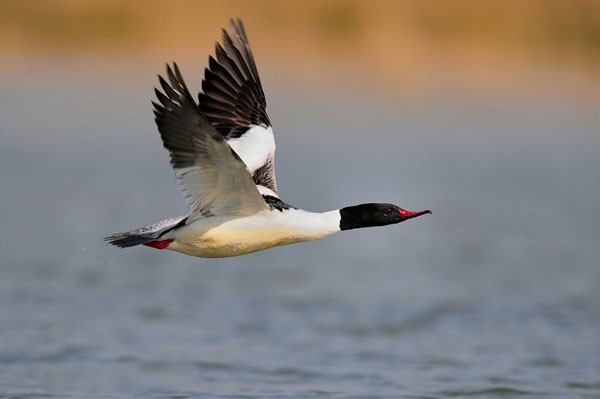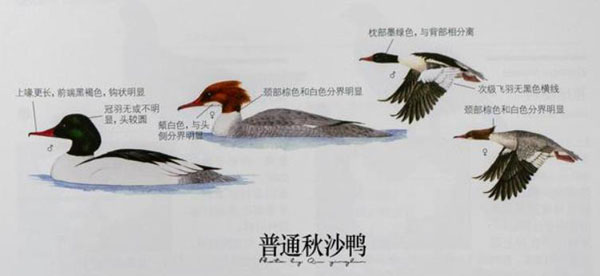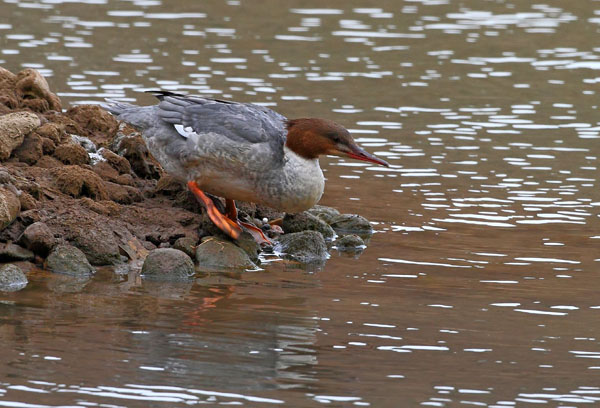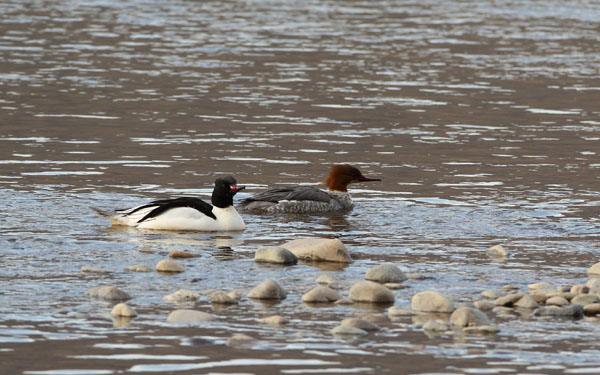Mergus merganser
IUCN
LCBasic Information
Scientific classification
- name:Mergus merganser
- Scientific Name:Oriental Fish Duck,Mergus merganser,Common Merganser
- Outline:Waterfowl
- Family:Anseriformes Anatidae Merganser
Vital signs
- length:54-68cm
- Weight:1-2kg
- lifetime:6-8years
Feature
It is the largest species of merganser.
Distribution and Habitat
In China, it breeds in northern Xinjiang, northeast China and the Qinghai-Tibet Plateau. Migration is found in all areas except the Tarim Basin and surrounding arid areas, and stray birds go to Taiwan Island and Hainan Island. Abroad, it is almost distributed throughout the entire North Pole area north of the Tropic of Cancer, and winters in the southern part of the distribution area.
During the breeding season, the common merganser mainly inhabits forests and rivers, lakes and estuaries near forests, and also inhabits open waters in plateau areas. During the non-breeding season, it mainly inhabits large inland lakes, rivers, reservoirs, ponds, estuaries and other freshwater waters, and occasionally goes to bays, estuaries and coastal intertidal areas.
Appearance
The male has a dark green head, upper neck and upper back, large white spots on the wings, and pure white body sides. The female has a chestnut brown head and upper neck, gray upper body, white lower body, some individuals have gray flanks with inconspicuous scaly spots, white chin and throat, white wing mirror, thick base of beak, obvious hook at the tip. The iris is dark brown, the beak is narrow and straight with a hook at the tip, dark red, and the feet are red.
Details
The Common Merganser is the largest and most widely distributed piscivorous Merganser. It forages by diving. It can dive for up to half a minute and forages during the day. It often swims on the calm lake surface while diving frequently to forage. It mainly feeds on small fish, but also preys on aquatic invertebrates such as mollusks, crustaceans, and stone silkworms in large quantities, and occasionally eats a small amount of plant food. It often moves in large groups in winter and needs to run on the water surface to take off.

They often form small groups. During migration and winter, they often form large groups of dozens or even hundreds of them. Occasionally, they can be seen alone. When swimming, their necks are stretched very straight, and sometimes they immerse their heads in the water and dive frequently. When resting, they often wander along the shore or live on the beach by the water. They fly fast and straight, with their wings flapping quickly, often making clear wing vibration sounds. They appear clumsy when taking off, and need to flap their wings rapidly on the water surface and run on the water surface for a while before they can fly. It is also very good at diving, and can swim underwater for 25-35 seconds each time. It can also walk on the ground, and is not very afraid of people. It often appears in urban parks and lakes, but it is very alert and difficult for people to approach. The call is quite quiet. The male bird makes a false voice uig-a call when courting, and the female bird has several hoarse calls.

In spring, it begins to migrate from the wintering grounds from early to mid-to-late March, and arrives at the breeding grounds in early to mid-April. In autumn, they leave the breeding grounds in late September and early October, arrive at the northernmost wintering grounds in late October to early November, and arrive at the southern wintering grounds in mid-to-late November. They migrate in small groups, usually along rivers. The flight altitude is usually not high, and they often fly close to the water surface.

The breeding season is from May to July. They usually arrive at the breeding grounds in small groups. They usually nest in natural tree holes in old trees close to the water, or in rock crevices, caves, bushes and grass near the shore. The chicks mature early, and their bodies are covered with down feathers after hatching. They come out of the nest hole and enter the water on the second or third day after hatching, and can swim and dive.

The Common Merganser is the most numerous and widely distributed species of Chinese Merganser. It is common in eastern China and the Yangtze River Basin during winter and migration, and the population is large, spread across various lakes, mountain streams and lowlands. But it is no longer common, and the population is very small. According to the Asian Midwinter Waterbird Survey organized by the International Waterfowl Research Bureau in 1990 and 1992, 3,466 were seen in China in 1990 and 7,256 in 1992. In terms of global population, the wintering population in North America is about 165,000, in northwestern Europe about 75,000, and in the Black Sea and Caspian Sea regions of western Russia about 26,000. In Asia, there are 79 in West Asia, 317 in South Asia, and 10,305 in East Asia.








